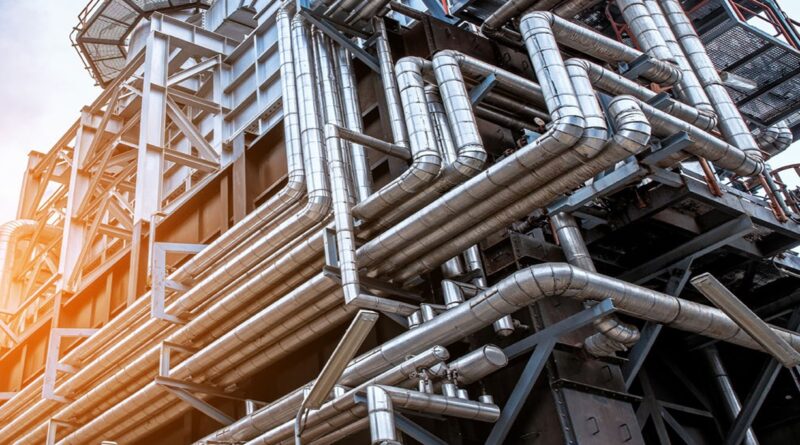Putin’s War: An expanded role for US LNG
For European countries wanting alternatives to Russian gas, the US is an obvious place to find suppliers. The US has the gas resources, the infrastructure, and the construction capabilities to achieve a significant increase in LNG exports relatively quickly. It cannot be an answer to any immediate shortages — US LNG export facilities are already running at full capacity — but in a few years’ time it could make a significant contribution to reducing Europe’s dependence on Russian gas.
Proposed new US LNG projects with a total capacity of about 160 million tons per year (mmtpa) have permits for construction and export sales. That is more than the total US export capacity currently in operation and under construction, which totals about 110 mmtpa. European countries’ hunt for additional supplies increases the likelihood of those projects going ahead.
Venture Global’s newly completed Calcasieu Pass project in Louisiana has set the pace in terms of how quickly new export capacity can be brought on stream. The final investment decision for the plant was taken in August 2019, and it is scheduled to ship its first cargo any day now, just 30 months later. “What Venture Global is doing is showing that it doesn’t have to take a long time to bring new US export capacity on stream,” says Alex Munton, Wood Mackenzie’s principal analyst for Americas LNG. “They have used modular construction, which means a lot of the work can be done off-site, in factory conditions. And their contracting strategy, doing their own procurement, has helped hold costs down.”
There are six new US LNG projects that have all the permits they need to start construction. The nearest to final investment decisions are Cheniere’s Corpus Christi Stage 3 project and Venture Global’s Plaquemines LNG. We expect both to start construction this year. Others such as Tellurian’s Driftwood LNG and NextDecade’s Rio Grande LNG have also have signed EPC contracts. All of these projects have also signed sales contracts with buyers including Shell, Vitol and Gunvor.
Behind them there are six more proposed projects along the Gulf of Mexico coast that have approval from the Department of Energy for LNG exports without restrictions on destination. Given the increased level of interest from European buyers, we expect at least two or three new US export projects to secure the financing they need and take FID this year, with more following in future years.
“Before, European customers were not very enthusiastic about signing long-term contracts to buy LNG. There were questions over whether they would still be selling gas in 20 years’ time, given Europe’s net zero goals. And US contracts locked them into these fixed long-term commitments,” says Wood Mackenzie’s Munton. “Things are completely changed now. The conversations with customers will be very different.”
After Germany announced it was putting the certification of Nord Stream 2 on hold, Dmitry Medvedev, former president of Russia and now deputy chair of the Security Council, tweeted: “Welcome to the brave new world where Europeans are very soon going to pay €2.000 for 1.000 cubic meters of natural gas!” That is a price equivalent to about $62 per million British Thermal Units (mmBTU).
That might be an exaggeration: European benchmark TTF gas futures for December 2022 were trading at the equivalent of about $30 /mmBTU at the end of last week. But even so, US gas priced at about $4.50 / mmBTU for front month benchmark Henry Hub futures, giving a delivered cost of LNG to Europe of about $9-$10 / mmBTU, still looks highly competitive.
One potential hitch in the expansion of US LNG exports is a move by federal regulators to look at greenhouse gas emissions when deciding whether a proposed project is in the public interest. The Federal Energy Regulatory Commission earlier this month issued an statement for approvals of new pipelines and LNG plants. Any project with greenhouse gas emissions of more than 100,000 tons per year of carbon dioxide equivalent will be required to submit an Environmental Impact Statement including an assessment of its climate impact, which will then be taken into account in FERC’s decision on whether to approve the project.
The policy statement, which accompanied a wider clarification and expansion of the certification process for new gas pipelines and LNG facilities, follows a ruling last year from the DC Circuit court of appeals that FERC had failed to properly address climate impacts and local pollution when approving two LNG export plants in Texas.
Commissioner James Danly, who opposed the new policy, argued that it represented “a dramatic expansion” of FERC’s authority to impose conditions, and was probably not supported by the law.
The new policy applies to pipelines only if they cross state lines, and most of the key routes for supplying LNG plants on the Gulf coast will be within either Texas or Louisiana, so any new infrastructure needed there is unlikely to be affected. And as discussed above, there is still room for a significant increase in US LNG exports just from projects that already have FERC approval.
So the new policy may not have much immediate impact on the LNG outlook. However, it will create additional challenges for developers in future. For the Biden administration, it is a sharp demonstration of how its climate goals and strategic objectives can conflict.




